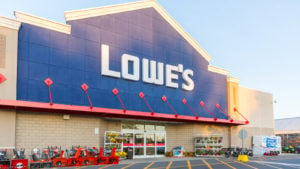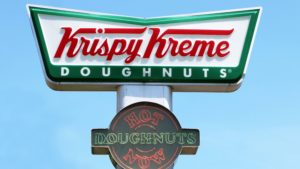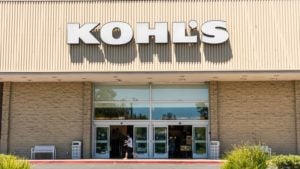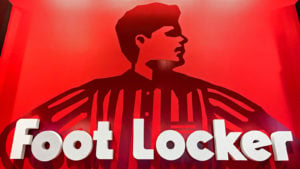Retail stocks could have a busy few days as earnings season is in full swing.
Next week we’ll get quarterly prints from a series of leading retailers. Taken together, the results should provide strong indications of the state of the U.S. economy and consumer spending. As inflation remains high and interest rates used to combat it continue to rise these retail stocks could be canaries in coal mines.
So far, earnings for the second quarter that ran from April through June have been better than expected. FactSet reports that, with 87% of S&P 500 companies having already issued Q2 prints, 75% announced better than expected earnings per share, and 70% reported more revenue than Wall Street had anticipated.
Retailers are expected to bring in difficult numbers for the second quarter though as they directly feel the impact of inflation and any slowdown in consumer spending.
Analysts and investors will be watching closely for signs of resilience and continued spending on the part of consumers. Here are seven retail stocks reporting earnings next week.
| WMT | Walmart | $129.70 |
| HD | Home Depot | $310.79 |
| LOW | Lowe’s | $201.92 |
| TGT | Target | $169.22 |
| DNUT | Krispy Kreme | $14.48 |
| KSS | Kohl’s | $32.62 |
| FL | Foot Locker | $30.84 |
Walmart (WMT)

The week kicks off with a print from Walmart (NYSE:WMT). This indicator among retail stocks is the biggest retailer in the world with $570 billion in annual revenue
It is also the largest private sector employer on earth with a global workforce that numbers 2.2 million people. Yet the that Walmart does not mean it is immune to economic headwinds.
Walmart announced earlier this month that it is cutting 200 corporate jobs after it lowered its forward guidance for the year, saying it now expects earnings per share to decline between 11% and 13%. The company previously forecast earnings to be down only about 1% for the year.
Walmart is grappling with slowing consumer spending in the wake of high inflation and rising interest rates used to lower it. The slowdown in consumer spending has left the company with bloated inventories that it is struggling to manage in the face of ongoing problems with its supply chains.
Walmart, which is also the largest grocer in the U.S., said consumers continue to shop for food at its stores but have stopped buying general merchandise products. Analysts expect Walmart to report EPS of $1.78 on revenues of $150.66 billion when it announces on Aug. 16. So far this year, WMT stock has declined nearly 15% so far this year.
Home Depot (HD)

We’ll get an idea of how the housing market is performing when home improvement retailer Home Depot (NYSE:HD) reports its latest earnings on Aug. 16.
The company is expected to report earnings per share of $4.95 on quarterly revenues of $43.37 billion. When last we heard from Home Depot, it had reported record first-quarter sales and raised its full-year guidance. The company forecast a sales increase of 3% and earnings per share growth in the mid-single digits.
The company previously forecast “slightly positive” sales growth and for earnings per share to increase in the low single digits.
Home Depot attributed the strong Q1 print and raised guidance to the fact that sales to construction companies and professional contractors outpaced sales for do-it-yourself projects.
Kitchen and bathroom installation products and building materials were categories that saw double-digit sales growth in this year’s first quarter. Additionally, Home Depot said that it is benefitting from consumers trading up to premium products at its stores.
It will be interesting to see if Home Depot maintains its upbeat outlook after a difficult second quarter that saw the economy slow and stock markets roiled by volatility. So far this year, HD stock is down 24%.
Lowe’s (LOW)

Lowe’s (NYSE:LOW) generated headlines earlier in August after offering its employees a four-day work week. The move was undertaken to retain staff in an increasingly tight labor market.
Lowe’s remains the second biggest company in America’s home improvement industry after Home Depot, which makes it one of the retail stocks to keep a close eye on.
Similar to other retailers, LOW stock has slumped this year, down 20% since January to just over $200 per share. However, the share price is up more than 5% in the last 12 months and has gained more than 150% in the past five years.
Lowe’s is a dividend aristocrat, having increased its quarterly payout to shareholders for more than 50 years. The company offers an attractive dividend that yields 2.11%, or $1.05 per share each quarter.
Analysts are expecting Lowe’s to announce earnings per share of $4.62 on revenues of $28.14 billion for the April through June quarter. However, Lowe’s could outperform if it benefits from the same trends that have been fueling Home Depot’s earnings.
Analysts continue to view LOW stock as undervalued. Among 26 professionals who cover the company, the median price target on the stock is $236.
Target (TGT)

Target (NYSE:TGT) will be hoping that things go better with its upcoming earnings print than they did when the company reported its Q1 numbers in May.
TGT stock immediately plunged 25% to a 52-week low after the company badly missed Wall Street forecasts. As with other retail stocks such as Walmart, Target has been hurt by a combination of high inflation, rising interest rates, slowing consumer spending and elevated inventory levels.
As a result, Target reported first-quarter earnings per share of $2.19 compared to $3.07 that had been expected by analysts. Revenues came in at $25.17 billion versus $24.49 billion that was forecast. Consequently, Target’s stock tanked.
Recovery plans include opening three new delivery hubs to help lower costs and get online purchases into the hands of customers faster.
Target plans to eventually have nine of them across the U.S. Additionally, the company has been raising prices to help offset its costs. We’ll see if these efforts are having an impact when Target reports its Q2 numbers.
Analysts are forecasting that the company will announce earnings per share of $0.73 on revenues of $26.07 billion. So far this year, TGT stock has fallen a total of 27%.
Krispy Kreme (DNUT)

Famed doughnut maker and food retailer Krispy Kreme (NASDAQ:DNUT) reports earnings on Aug. 17. The company returned to the public markets a year ago after five years as a privately held company and is one of the retail stocks investors should keep an eye on next week.
Since making its market return, DNUT stock has declined 24%. A strong earnings report could go a long way to boosting investor confidence in the company and give its share price a much-needed lift.
Analysts are forecasting earnings per share of $0.09 on revenues of $385.32 million.
In addition to 1,400 retail locations, Krispy Kreme has formed partnerships with grocery store chains internationally. The company recently announced a partnership in the U.S. with Good Humor to develop a line of doughnuts inspired by ice cream truck treats.
We’ll see if these partnerships are helping the company’s bottom line when it reports Q2 results next week. In February of this year, Krispy Kreme reported its first profit since going public last July, announcing net income of $4.3 million, or 1 cent per share.
Kohl’s (KSS)

It’s been a tough year for retail department store retail chain Kohl’s (NYSE:KSS). The company’s stock jumped 10% in June following media reports that Franchise Group (NASDAQ:FRG) was planning to take over Kohl’s for $8 billion.
However, KSS stock quickly gave up those gains when the talks ended. The company’s share price has continued to slump in recent weeks and is now down nearly 35% on the year.
Kohl’s lowered its outlook for the second quarter, citing soft consumer spending and high inflation. Kohl’s continues to be pressured by activist investors to pursue a sale.
Earlier this year, Kohl’s turned down a takeover offer that would have paid $64 per share for the company. Since January, Kohl’s has engaged with more than 25 potential suitors without reaching a deal. Analysts who cover the company expect Kohl’s to report earnings per share of $1.14 on revenues of $3.85 billion when it reports on Aug. 18.
Foot Locker (FL)

Athletic shoe and clothing retailer Foot Locker (NYSE:FL) continues to see sales at its shopping mall locations erode. However, the company’s pivot to online sales grew profits an average of 11% per annum over the past five years.
While the company’s long-term success is impressive, it has faced a number of short-term challenges. No sooner had its shopping mall locations re-opened following the pandemic than consumers retreated in the face of inflation and rising interest rates.
Foot Locker has said that it expects sales to fall by 4% to 6% this year and that same-store sales are forecast to drop by 8% to 10%.
The gloomy outlook has contributed to a 31% decline in FL stock this year. The company’s shares currently trade for $30 apiece and have declined 47% in the last 12 months.
Foot Locker’s stock has also been harmed by the news that the company will no longer sell as many products from its top vendor Nike (NYSE:NKE).
Purchases from Nike won’t exceed 60% of total purchases this year, according to Foot Locker. That’s down from 70% last year. The change is the result of Nike wanting to sell more of its sneakers and apparel directly to consumers. Analysts forecast that Foot Locker will report revenues of $2.08 billion when it reports next week.
On the date of publication, Joel Baglole did not have (either directly or indirectly) any positions in the securities mentioned in this article. The opinions expressed in this article are those of the writer, subject to the InvestorPlace.com Publishing Guidelines.
